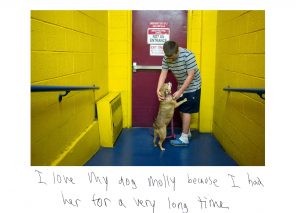” ‘Their voices are silenced.” she said, ‘I really wanted to bring that element into it because people who are marginalized or underrepresented within the media, far too often they don’t have the opportunity to speak for themselves.’ “
Growing up in Hell’s Kitchen, Erin Lefevre realized that her younger brother Liam was “a little bit different from everyone else.”
He was constantly in and out of doctors’ offices as an infant. At 3 years old, he was told he was on the autism spectrum.
Ms. Lefevre had a hard time articulating her brother’s condition when she was a child. But today she is perfectly comfortable raising the issue. So much so that she has been sharing intimate moments from Liam’s everyday life through her documentary project “Liam’s World.”
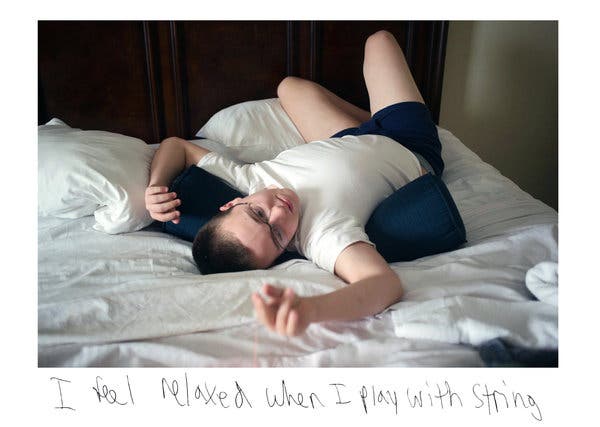
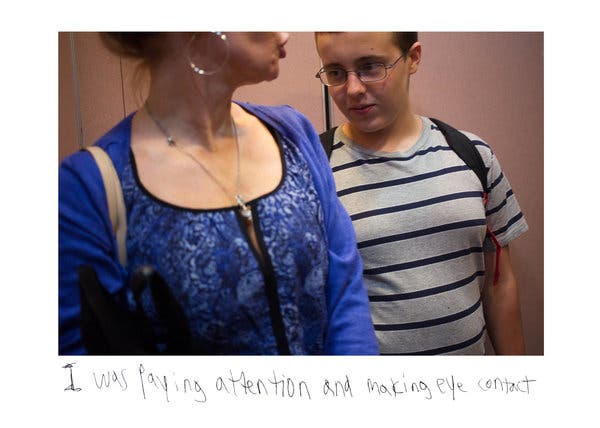
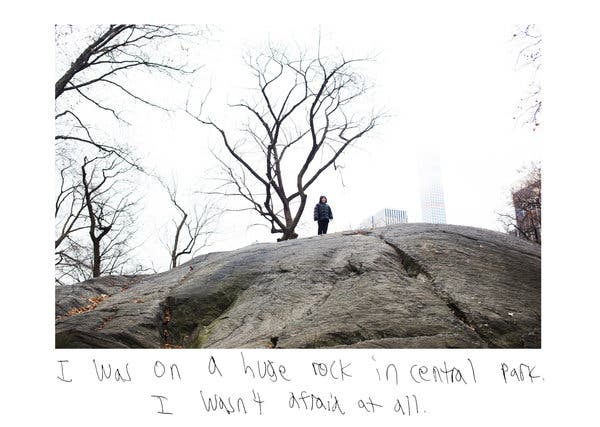

“I wanted to better understand how he sees the world and gets a better sense of who he is as a person transitioning from youth into adulthood,” she said.
Ms. Lefevre, 25, started shooting her brother, now 18, more than four years ago. When she started sharing photos of Liam with her peers or editors, she would often face stereotypical notions of what mental health conditions “look like.”
“A common response was: ‘It doesn’t look like there’s anything wrong with him,’” Ms. Lefevre said. “I just really wanted to emphasize that mental health isn’t about how someone looks. It’s a state of mind.”
Photographing a state of mind would prove difficult. How can one visualize a disorder associated with impaired communication, social skills, and repetitive behaviors?
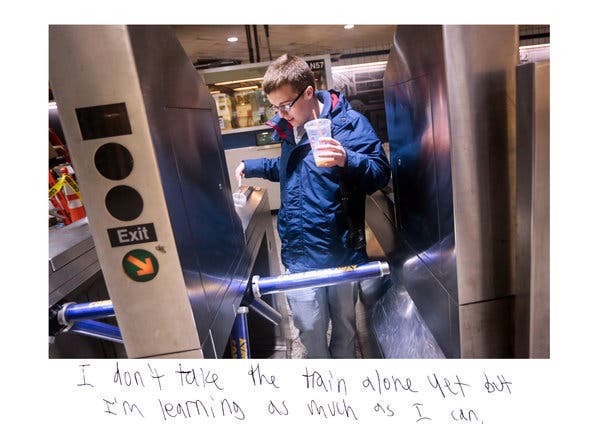
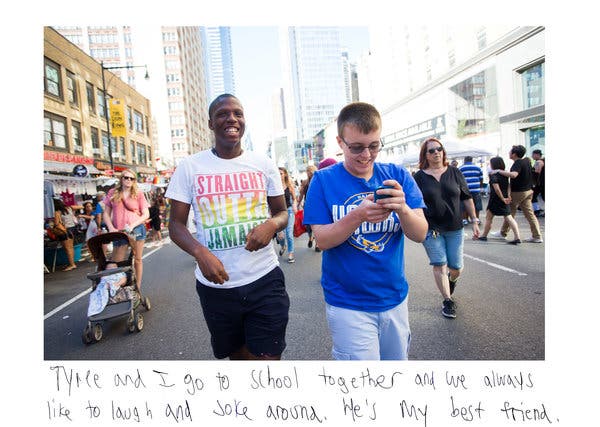
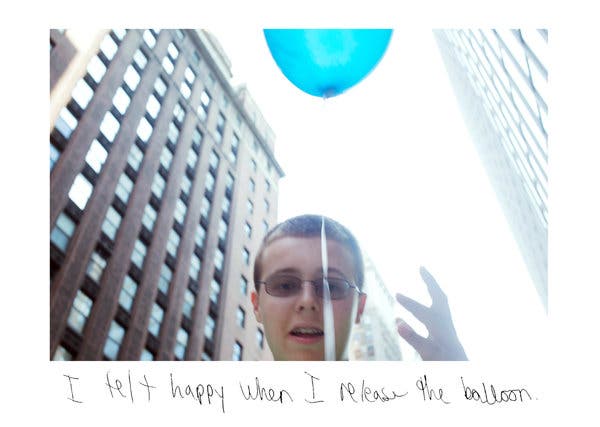
After giving it some thought, Ms. Lefevre asked Liam to write down an observation or memory alongside each photo to explain how he felt in the moment.
“I really wanted to bring that element into it because people who are marginalized or underrepresented within the media, far too often they don’t have the opportunity to speak for themselves,” she said. “Their voices are silenced.”
By allowing Liam to share his thoughts, the photo essay captures the complexity of the autism spectrum disorder. Liam’s disability affects some of his intellectual capabilities. But it doesn’t define his personality.
“In a lot of ways, he’s just like any other teenager,” Ms. Lefevre said. “He likes to push buttons sometimes. He can be a bit cheeky.” (In a photo of himself visiting his grandmother, Liam wrote, “Whenever my mom gives me a hard time I tell her she is just like her mother.”)
A seemingly trivial image of Liam passing through a subway turnstile hints at the type of struggles he faces. While Ms. Lefevre took the train to and from school by herself at age 13, her brother isn’t allowed to commute on his own yet.
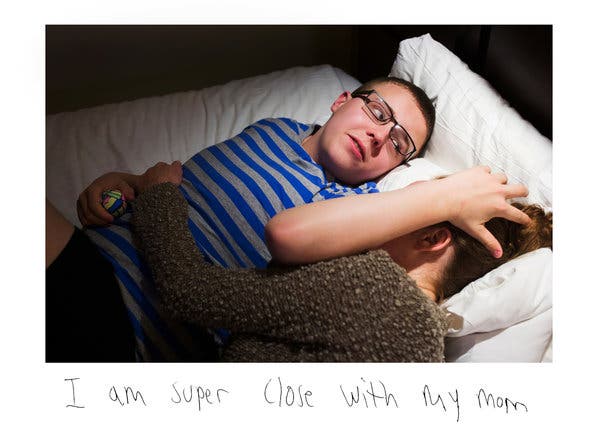
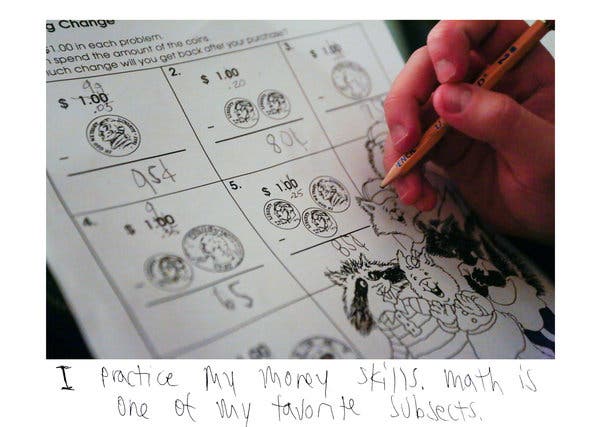
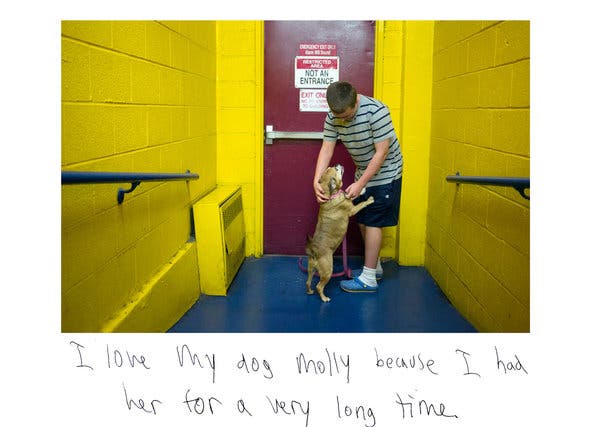
In a detail shot, Liam is trying to solve a math problem in which a quarter is subtracted from a dollar. His answer: 85 cents.
The photo isn’t merely about a single homework assignment. It conveys the idea that, though Liam is an adult, he doesn’t understand the value of a dollar and often needs supervision when handling money.
The project has helped Ms. Lefevre better understand her brother, and it has also allowed him to reflect on his own questions and insecurities.
When Ms. Lefevre posted some of the images on social media, Liam was a bit hesitant about having his life laid bare. He once sent his sister a text message saying, “I can be a little ashamed sometimes that I have autism.”
Those worries led to long, constructive conversations. Ms. Lefevre told Liam that adding his insight could enlighten others and show that his condition is just one aspect of his identity.
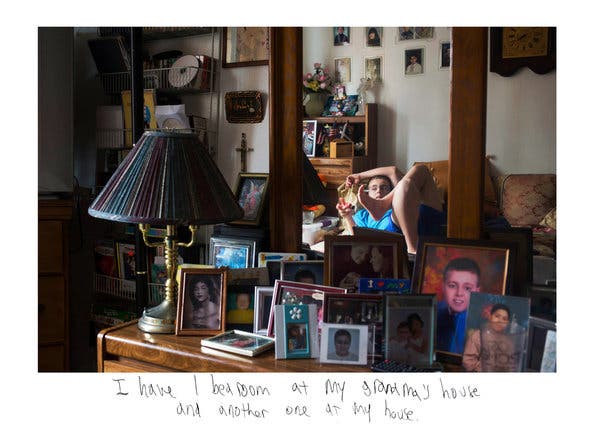
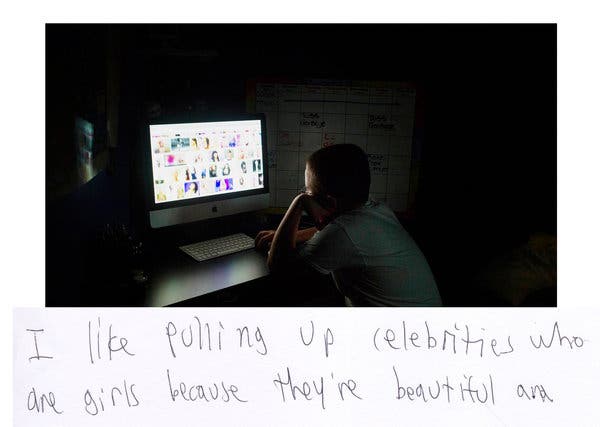
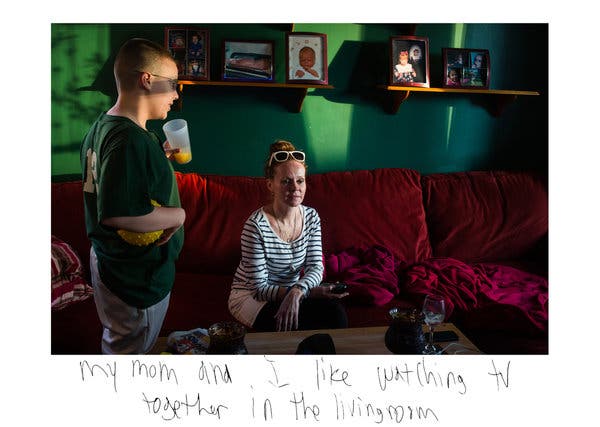
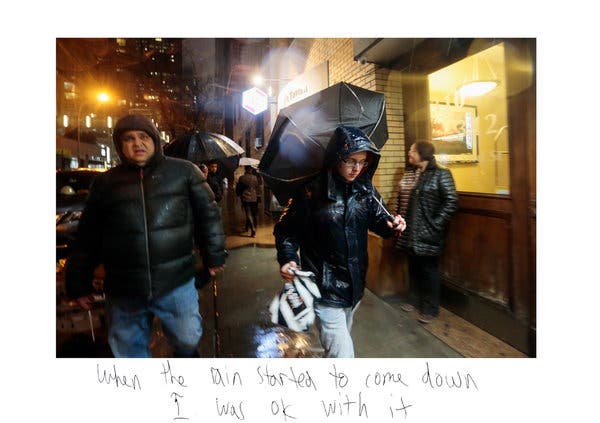
After all, she faced her own misgivings.
“When it’s family, it’s personal,” Ms. Lefevre said. But as the project progressed, she sat down with her relatives and explained her creative process. “I’ve made my intentions very clear that photography is something that really helps me understand the world.”
Now Liam and his parents are more at ease with the work, and Erin herself feels more confident in sharing it after having Liam contribute. He’s no longer just a subject; he’s also a collaborator.
Ms. Lefevre hopes other families who have relatives with special needs can “see pieces of themselves” in the images. And regardless of which direction her career takes, she says she is determined to document her brother’s story for as long as possible.
“It’s a project that I think can go on for essentially his entire life.”
This article is originally posted by Sara Aridi(Text) and Erin Lefevre(Photographs) on Aug. 22, 2018
News link: https://www.nytimes.com/2018/08/22/lens/visualizing-life-with-autism.html


